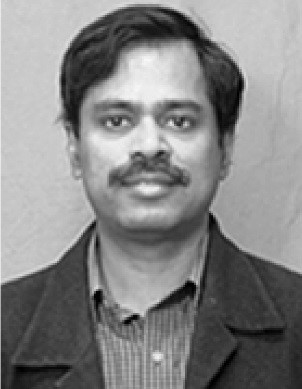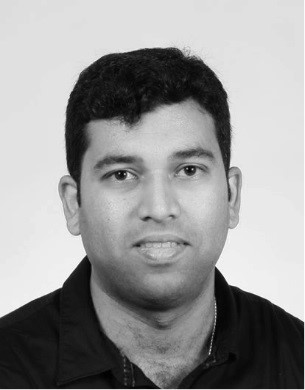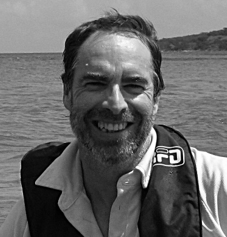Title
Real-Time Monitoring of the Great Barrier Reef Using Internet of Things with Big Data Analytics
Abstract
The Great Barrier Reef (GBR) of Australia is the largest size of coral reef system on the planet stretching over 2300 kilometers. Coral reefs are experiencing a range of stresses including climate change, which has resulted in episodes of coral bleaching and ocean acidification where increased levels of carbon dioxide from the burning of fossil fuels are reducing the calcification mechanism of corals. In this article, we present a successful application of big data analytics with Internet of Things (IoT)/wireless sensor networks (WSNs) technology to monitor complex marine environments of the GBR. The paper presents a two-tiered IoT/WSN network architecture used to monitor the GBR and the role of artificial intelligence (AI) algorithms with big data analytics to detect events of interest. The case study presents the deployment of a WSN at Heron Island in the southern GBR in 2009. It is shown that we are able to detect Cyclone Hamish patterns as an anomaly using the sensor time series of temperature, pressure and humidity data. The article also gives a perspective of AI algorithms from the viewpoint to monitor, manage and understand complex marine ecosystems. The knowledge obtained from the large-scale implementation of IoT with big data analytics will continue to act as a feedback mechanism for managing a complex system of systems (SoS) in our marine ecosystem.
Keywords
Artificial intelligence, big data analytics, coral bleaching, Internet of Things, wireless sensor networks, real-time monitoring, event detection
Authors
 Marimuthu Palaniswami Marimuthu Palaniswami
(University of Melbourne, Australia)
Marimuthu Palaniswami received the B.E. (Hons.) from the University of Madras, Chennai, India, the M.E. degree from the Indian Institute of Science, Bengaluru, India, M.Eng.Sc. from the University of Melbourne, Parkville, Australia and the Ph.D. degree from the University of Newcastle, Callaghan, Australia.
He then joined the University of Melbourne, Parkville, Australia, where he is currently Professor of electrical engineering and Director/Convener of a large ARC Research Network on Intelligent Sensors, Sensor Networks and Information Processing with about 200 researchers and interdisciplinary themes as focus for the center. He has co-authored more than 500 refereed journal and conference papers, including a number of books, edited volumes, and book chapters. His research interests include smart sensors and sensor networks, machine learning, neural networks, support vector machines, signal processing, biomedical engineering, and control.
Dr. Palaniswami has served international boards and advisory committee including a panel member for National Science Foundation, as an Associate Editor for Journals/transactions including IEEE Transactions on Neural networks and Computational Intelligence for Finance. He is the Subject Editor for the International Journal on Distributed Sensor Networks. He was given a Foreign Specialist Award by the Ministry of Education, Japan, in recognition of his contributions to the field of machine learning. He was named Distinguished Lecturer of the IEEE Computational Intelligence Society over the period 2013-2015.
He is also a co-founder of the European Centred IoT forum. He served as a general Chair for over 10 IEEE sponsored International conferences with a focus on Sensor Networks and IoT. He was funded by various government agencies for a number of IoT projects covering Infrastructure, Smart City, Healthcare, Transport, BigData Analytics and Smart Governance. His international funding covers projects, such as European Union’s FP7 Smart Santander, SocioTal, and OrganiCity.
He served as a member of the US NSF proposals panel, steering committee member for EU IoT projects and advisory panel member for Centre of Excellence on IoT projects. He has contributed immensely to creating IoT start-ups, keen to push the impact of IoT further on industry and society. |
 Aravinda S. Rao Aravinda S. Rao
(University of Melbourne, Australia)
Aravinda S. Rao received his B.E. degree in electronics and communications engineering from Visveswaraiah Technological University, Belgaum, India, in 2006, his M.E. degree in electronics and telecommunications from Deakin University, Geelong, Australia, in 2010, and his Ph.D. degree from the Department of Electrical and Electronic Engineering, the University of Melbourne, Australia, in 2016. He developed new video analytics solutions for real-time crowd monitoring in dense and occluded scenarios. He is currently working as a Postdoctoral Research Fellow in the Department of Electrical and Electronic Engineering at the University of Melbourne, Parkville, Australia.
He was a Deputy Engineer in the Development and Engineering division of Naval Systems/Sonar Systems, focusing on designing and developing hardware for submarine sonar systems, at Bharat Electronics Limited, Bengaluru, India, during 2006-2007. His research interests include Internet of Things (IoT), Computer Vision, and Machine Learning. |
 Scott Bainbridge Scott Bainbridge
(Australian Institute of Marine Science (AIMS), Australia)
Scott Bainbridge is a senior researcher and project manager within the Data and Technology Innovation programme at the Australian Institute of Marine Science (AIMS). Scott has a degree in Marine Science with an MBA in Technology Management. He currently works on reef based sensor networks as part of the Australian Integrated Marine Observing System (IMOS) as well as marine IoT systems, marine imaging systems and automated platforms including autonomous marine craft.
|